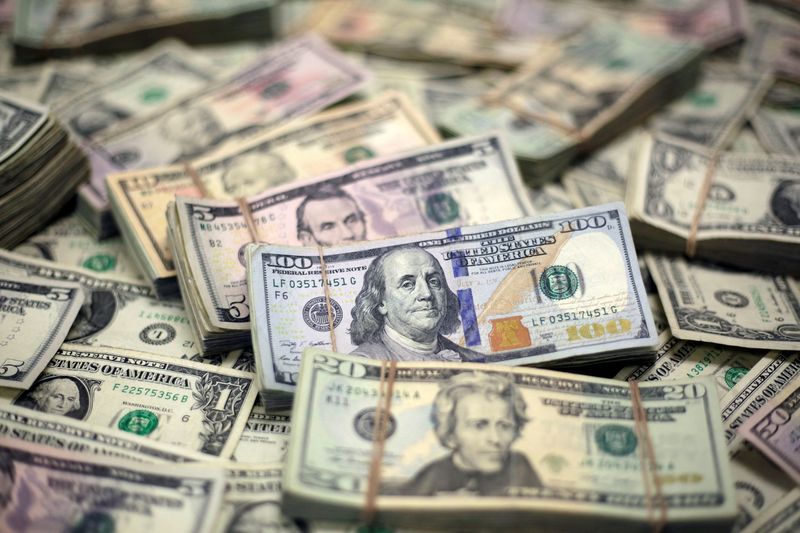Forex
Dollar gains on geopolitical tensions, pound slips after rate cut

By Karen Brettell
NEW YORK (Reuters) – The dollar gained on Thursday as rising geopolitical tensions drove a safe-haven boost, while the British pound fell after the Bank of England cut interest rates from a 16-year high.
Concerns about a widening conflict in the Middle East intensified after Hamas leader Ismail Haniyeh was assassinated in the Iranian capital, Tehran, on Wednesday morning, drawing threats of revenge on Israel.
“We are looking at the threat of outright conflict breaking out in the Middle East,” said Karl Schamotta, chief market strategist at Corpay in Toronto. “That is supporting the dollar’s safe-haven appeal.”
The dollar also bounced as a selloff on Wednesday following dovish comments by Federal Reserve Chair Jerome Powell at the conclusion of the U.S. central bank’s two-day meeting was seen as possibly overdone.
“Although Jerome Powell was extremely dovish in the press conference, the statement released by the Federal Open Market Committee really sounded more balanced,” said Schamotta.
Powell said that interest rates could be cut as soon as September if the U.S. economy follows its expected path. The Fed’s policy statement on Wednesday cited “some further progress toward the (Federal Open Market) Committee’s 2% objective,” while noting that the unemployment rate, at 4.1%, “remains low.”
Traders are now fully pricing in three 25-basis-point rate cuts by year-end, indicating one cut at each of the Fed’s September, November and December meetings.
The next major U.S. economic release that is likely to drive Fed policy will be Friday’s jobs report for July. It is expected to show that employers added 175,000 jobs during the month, while the unemployment rate is expected to stay steady at 4.1%.
Data on Thursday showed that the number of Americans filing new applications for unemployment benefits increased to an 11-month high last week.
The was last up 0.35% at 104.41.
Tumbling stocks also likely boosted the safe-haven appeal of the U.S. currency.
Sterling slipped 0.96% to $1.2733, the lowest level since July 3, after the Bank of England cut interest rates following a tight vote by policymakers, who were split over whether inflation pressures had eased sufficiently.
Governor Andrew Bailey led the 5-4 decision to reduce rates by a quarter-point to 5%, and he said the BoE would move cautiously going forward.
“If you look at the headlines that Bailey produced: caution on cutting too quickly or by too much, it implies to me that they’re looking at sort of a steady quarterly pace of reductions,” said Colin Asher, economist at Mizuho.
The euro touched a three-week low of $1.07775 and was last down 0.36% at $1.07865.
The Japanese yen edged higher, a day after a dramatic rally following the Bank of Japan’s decision to hike rates to 0.25%, the highest since 2008.
The yen has gained since hitting a 38-year low of 161.96 against the dollar on July 3, boosted by interventions by Japanese authorities and by traders unwinding carry trades in which they were short the yen and long U.S. dollar assets.

The dollar was last down 0.21% at 149.65 yen . It earlier reached 148.51, the lowest since March 15.
In cryptocurrencies, bitcoin fell 2.68% to $62,848.

 Forex3 years ago
Forex3 years agoForex Today: the dollar is gaining strength amid gloomy sentiment at the start of the Fed’s week

 Forex3 years ago
Forex3 years agoUnbiased review of Pocket Option broker

 Forex3 years ago
Forex3 years agoDollar to pound sterling exchange rate today: Pound plummeted to its lowest since 1985

 Forex3 years ago
Forex3 years agoHow is the Australian dollar doing today?

 Cryptocurrency3 years ago
Cryptocurrency3 years agoWhat happened in the crypto market – current events today

 World3 years ago
World3 years agoWhy are modern video games an art form?

 Commodities3 years ago
Commodities3 years agoCopper continues to fall in price on expectations of lower demand in China

 Economy3 years ago
Economy3 years agoCrude oil tankers double in price due to EU anti-Russian sanctions
























